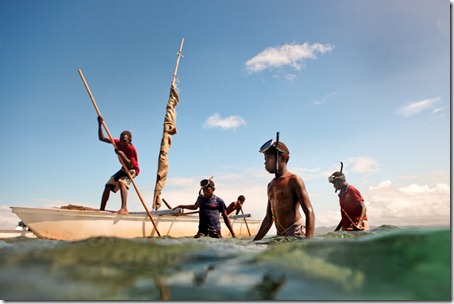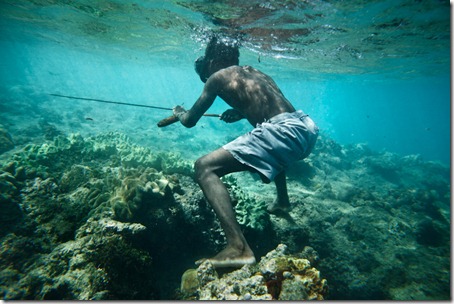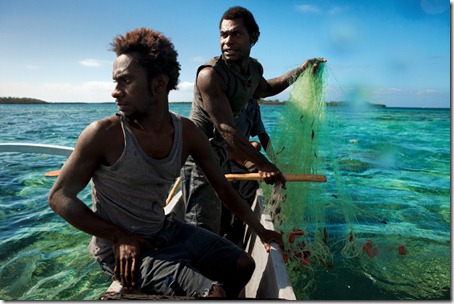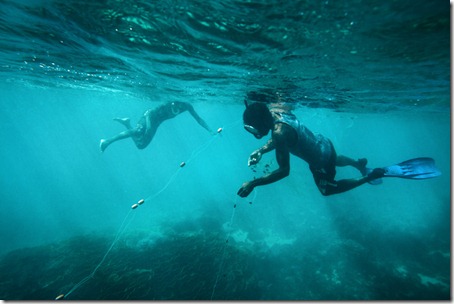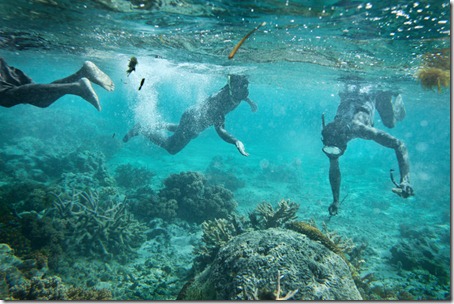Fishing on Maskelyne Island
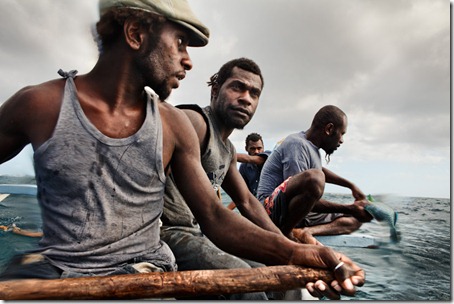 Those who have been following my blog for a while know that I have a bit of a photographic obsession with fishermen and things related to fishing. It’s not that I like fishing myself (I find it a little boring), it’s that there’s something about the visual aesthetic in the things around fishing that appeals to me. All those gadgets – boats, canoes, nets, sails, oars. Of course I do love eating fish and whenever you’re photographing fishermen, there’s a good chance that there will be at least some fish for dinner. If you ask me, that’s a great bonus.
Those who have been following my blog for a while know that I have a bit of a photographic obsession with fishermen and things related to fishing. It’s not that I like fishing myself (I find it a little boring), it’s that there’s something about the visual aesthetic in the things around fishing that appeals to me. All those gadgets – boats, canoes, nets, sails, oars. Of course I do love eating fish and whenever you’re photographing fishermen, there’s a good chance that there will be at least some fish for dinner. If you ask me, that’s a great bonus.
Because so much of Vanuatu is along the coast, one would think that fishing would be done in every single coastal village. While there’s certainly a lot of fishing, it’s not quite as widespread as I imagined. Nevertheless one of the places I visited – Maskelyne Island, also known as Ulleveo was pretty ideal. Here people mostly fish with small canoes and the process involves a lot of rowing, casting fishing nets and even the occasional use of the local spear gun called “lastic”, probably because essentially it’s just a piece of elastic tied to a piece of wood. I’m proud to say that I tried it out and even managed to spear one fish.
Anyway, the process promised to be pretty interesting and photogenic and I had been dying to use my underwater housing to photograph something besides coral and fish (no offence to coral and fish, it’s just that these subjects just bored me eventually). I went on two little fishing trips – one with a bunch of local children, the other with a few guys around my age. The children were spear-fishing and unfortunately they didn't go for very long because the sea was a little rough, so rough that I almost floated away because of not initially wearing my fins.
The older “boys” technique included the use of a net. They’d spread it out and then someone would start swimming and making strong splashes in the water in the hopes that the fish will frantically swim towards the net and get caught in it. Once in the net the fish would meet their doom as one of the chaps would swim towards it, spear it, extract it and put it into the canoe. At the end of the trip guys didn’t get much fish, turns out I was always in the wrong place while taking photos. I’d scare the fish and cause them to flee in the wrong direction. To console my fishing mates I decided to buy them a bucket of kava, which they appreciated greatly.
About the photos, these aren’t my greatest photographic achievements, but these are the better shots of what I’ve created so far using my Aquatech housing. The big problem was that to shoot something like this (at least the underwater part) truly effectively one needs to know what the heck is going on, what to expect and I didn’t know either. I’ve learned though and my next destination – the remote Banks islands will hopefully provide me with plenty more opportunities to photograph this sort of stuff.
One of the main reasons I got the housing was to get shots like these. What I mean is shots taken from the level of the water. It’s not underwater stuff, but without the housing you just ain’t getting a shot like this one.
In this particular scene the younger boys are getting ready to jump back into the boat after doing some spear fishing.
One of the youngsters taking aim at a fish with a “lastic”. Boys start doing this sort of stuff from a very early age. By their teens they are incredibly good swimmers and I guess they’re not bad at shooting either.
The older guys looking around for the right spot to cast the net. They have a few favourite spots which they come back to all the time and they can recognize them without GPS or anything alike. Another interesting example of a close bond between people and land or in this case water.
Spreading the net for the fish to become tangled in. I like how the light penetrates through the water, creating a fairly dramatic effect. The thing that I’ve learned so far about light and underwater photography is that – the more light you have the better.
Often the fish hide in underwater burrows and amidst the coral. The fishermen know where the best potential hiding spots are and always make sure to check them out.
A note on the Aquatech housing. I’ve been using the housing for long enough now to form some kind of an opinion on it. I have to say that it’s pretty cool, though there is a bit of a learning curve as in how to get the most out of it and how not to accidentally destroy your camera. I almost killed my 5D MKII because there was a little knob which got loose. I didn’t realize that water could come through because of that. Luckily it didn’t get too loose and the results weren’t disastrous, there was simply some leakage. Still, the camera began to act strange and though it’s back to normal now, I can only hope that some vital part inside it is not meeting a slow death by salt water as I type this.
All in all the housing works as it should. It’s great to have a port for a zoom lens (24-70mm) that allows it to be used as a zoom. Though I shot most of the stuff as wide as possible, I did need to get closer without physically getting closer a few times and you aren’t exactly going to be able to change lenses under water and so, the zoomable port is a huge bonus.
I will write much more about the housing later. I think it’s a good product and for the price range it seems like there’s nothing really better, so I think there’s some more valuable info I can share with anyone searching to get a housing for similar use.
